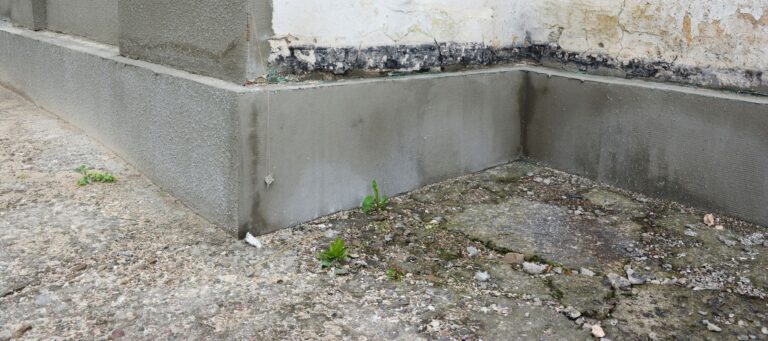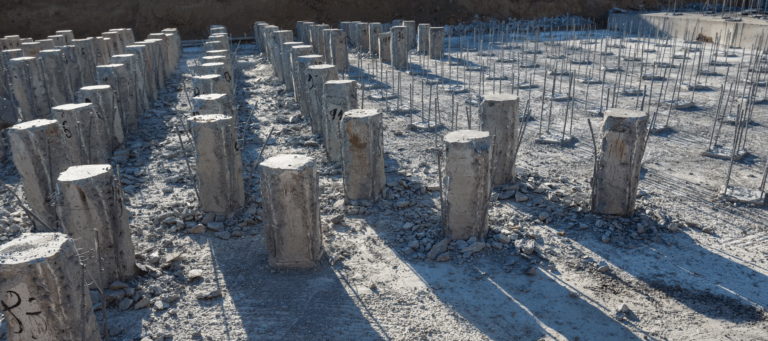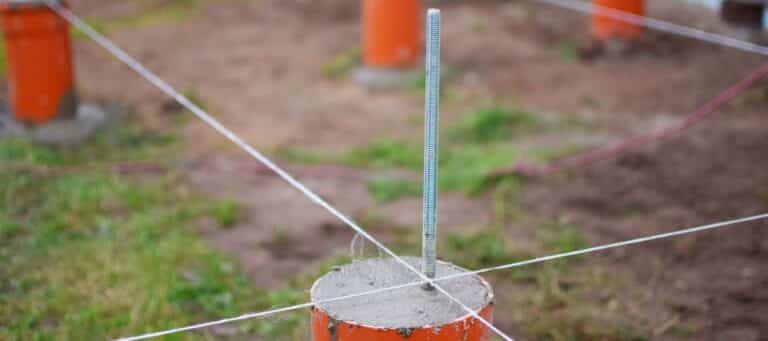Texas-Tough Home Slab Foundation
Solid Support Starts With A Strong Foundation
Slab foundations are one of the most common foundation types in Texas — and for good reason. They’re durable, cost-effective and ideal for our region’s soil from Dallas to San Antonio. But even the toughest concrete isn’t immune to damage from shifting soil, seasonal droughts or plumbing leaks. That’s where G.L. Hunt comes in.
With decades of experience and deep knowledge of local conditions, our team specializes in comprehensive slab foundation repair services. Whether you’re seeing signs of damage or just want peace of mind, we’re here to keep your home secure from the ground up.
What Is A Slab Foundation?
A slab foundation is a large, flat layer of poured concrete that supports your entire home. There’s no crawl space or basement — instead, your home sits directly on this solid base, with plumbing and utilities running beneath it.
Slab foundations are popular in Texas because they’re straightforward to build and help protect homes from pests and moisture. But when the soil underneath shifts — as it often does with our clay-rich terrain and dry seasons — cracks and settling can occur.
Do I Need Slab Foundation Repairs?
You might not think about your foundation every day, but small issues can turn into big problems if left unchecked. Look for these common signs of slab foundation damage:
- Cracks in your concrete slab or floors
- Uneven or sloping flooring
- Doors and windows that stick or don’t align
- Gaps between walls and ceilings
- Cracks along drywall or bricks (especially stair-step patterns)
- Chimney pulling away from the house
If you notice any of these issues, schedule an inspection with G.L. Hunt. We’ll assess the situation and provide a clear plan to stabilize your foundation and protect your home.

Why Slab Foundations Shift
Texas soil is known for its unpredictability. Our expansive clay expands when wet and shrinks when dry — leading to movement beneath your home. Add in heavy rains, droughts or poor drainage, and you’ve got the perfect storm for foundation problems.
Newly constructed homes can also settle naturally as materials adjust to their surroundings. Whether you’re in a newer build or an older home, slab foundation issues can arise — and the sooner they’re addressed, the better.
How Slab Foundation Repairs Are Done
Every slab foundation repair begins with a thorough inspection — but what happens after that? At G.L. Hunt, we follow a step-by-step process designed to restore your home’s stability with precision and care:
1. Foundation Assessment
We start by evaluating the extent of the damage using precision leveling tools and elevation readings. This helps us understand where and how much your foundation has shifted.
2. Custom Repair Plan
No two homes are the same — and neither are their foundations. Based on our assessment, we develop a tailored repair strategy. This could involve lifting sunken sections, stabilizing weak areas or reinforcing the structure to prevent future damage.
3. Pier Installation
In many cases, we install concrete or steel piers beneath the foundation. These piers are driven deep into stable soil to support the slab from below. This helps lift the structure back into its original position and prevents further sinking.
4. Foundation Lifting And Leveling
Once the piers are in place, we carefully lift the affected portions of the slab. Using hydraulic jacks and laser-level equipment, our team ensures everything is leveled precisely — minimizing stress on your home’s structure.
5. Backfilling And Cleanup
After the lift is complete, we backfill any access holes, compact the soil and return your property to its original condition. Our goal is to leave no trace — except a stabilized foundation.
6. Final Inspection And Warranty
We conduct a final inspection to verify the repairs and ensure everything meets our standards. And for your peace of mind, we back our work with industry-leading warranties.

Trusted Solutions From G.L. Hunt
We don’t just patch cracks — we provide long-lasting solutions tailored to your property. Our team uses proven techniques to lift, level and reinforce your foundation with minimal disruption to your home. We also offer:
- Thorough inspections using industry-leading diagnostics
- Personalized repair plans based on your soil and structure
- Professional crews with deep local expertise
- Transparent pricing and detailed estimates
- Industry-best warranties for long-term peace of mind
We’ve helped thousands of Texas homeowners restore stability to their homes. Let us do the same for you.
How To Prevent Slab Foundation Issues In Texas
Texas weather isn’t easy on your foundation. Between expansive clay soils, extreme heat and seasonal droughts, slab foundations are under constant stress. The good news is, there are proactive steps you can take to help prevent damage. Follow these steps to protect your slab:
- Maintain consistent soil moisture — Use soaker hoses or irrigation systems to keep the ground around your home from drying out and shrinking.
- Direct water away from the base of your home — Ensure your gutters and downspouts are clean and channeling water at least five feet away from your home.
- Avoid planting large trees too close — Roots can pull moisture from the soil and contribute to shifting or cracking.
- Fix plumbing leaks quickly — Even small leaks under the slab can erode soil and create voids beneath your foundation.
- Schedule regular inspections — A professional checkup can identify early warning signs before they cause significant damage.
Taking precautionary measures now can help avoid costly repairs later. And if you’re already noticing signs of trouble, the team at G.L. Hunt is ready to help.
Serving Happy Homeowners Across Texas
“Chuck conducted a thorough inspection of my slab foundation. He explained his observations and suggested actions I could take to protect my investment moving forward. A first-class experience! I will recommend G.L. Hunt to anyone, anywhere.” – Lynn W. ⭐️⭐️⭐️⭐️⭐️
Schedule Slab Foundation Repair Today
Your home deserves a solid foundation — and so do you. Whether you’re seeing clear signs of damage or just want an expert opinion, G.L. Hunt is here to help.
Contact us today for a free professional slab foundation inspection and get back to living confidently on solid ground.









